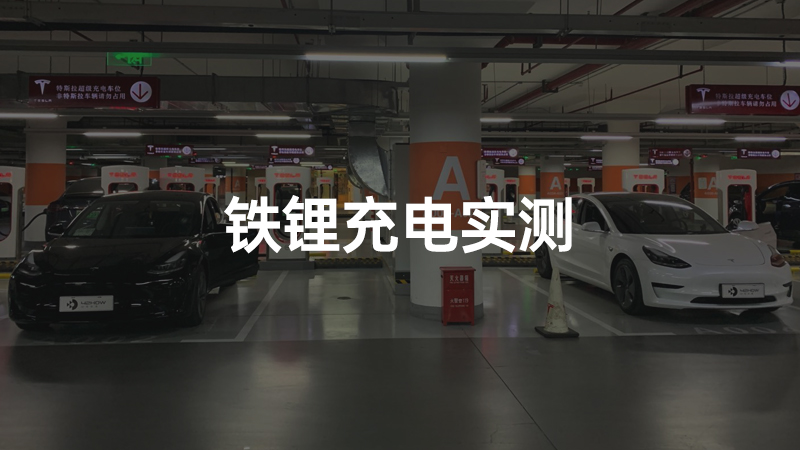On October 1st, the domestic Tesla Model 3 Standard Range Plus was reduced to RMB 249,900, and a new model equipped with CATL’s lithium iron phosphate battery was launched, increasing the NEDC range from the original 445 km to 468 km.
Although the price reduction this time was indeed huge and caused a great sensation in the market, as more and more users are choosing the iron phosphate battery version of the Standard Range Plus, there are many users who complain about slow charging speed of the iron phosphate battery version of Model 3.

In order to verify how much difference there really is in the charging speed between the iron phosphate battery version and the ternary lithium battery version, and whether it is really as many netizens say it is, we communicated in the Model 3 owners group in the garage, and finally found a Standard Range Plus owner with LG ternary lithium battery, and through his connection, we found another iron phosphate battery owner to assist us in the test. We would like to express our heartfelt thanks to these two owners for their enthusiastic cooperation.
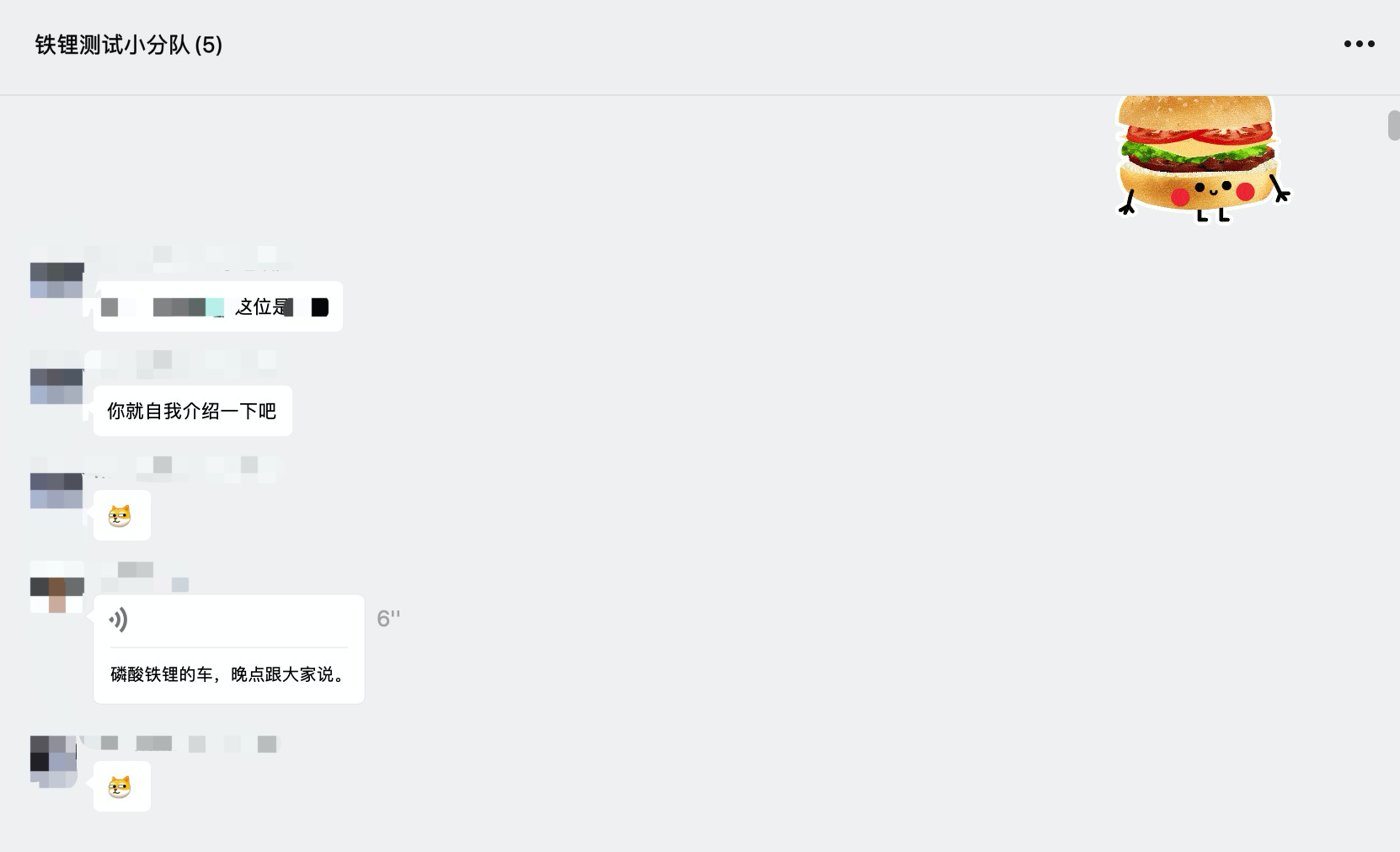
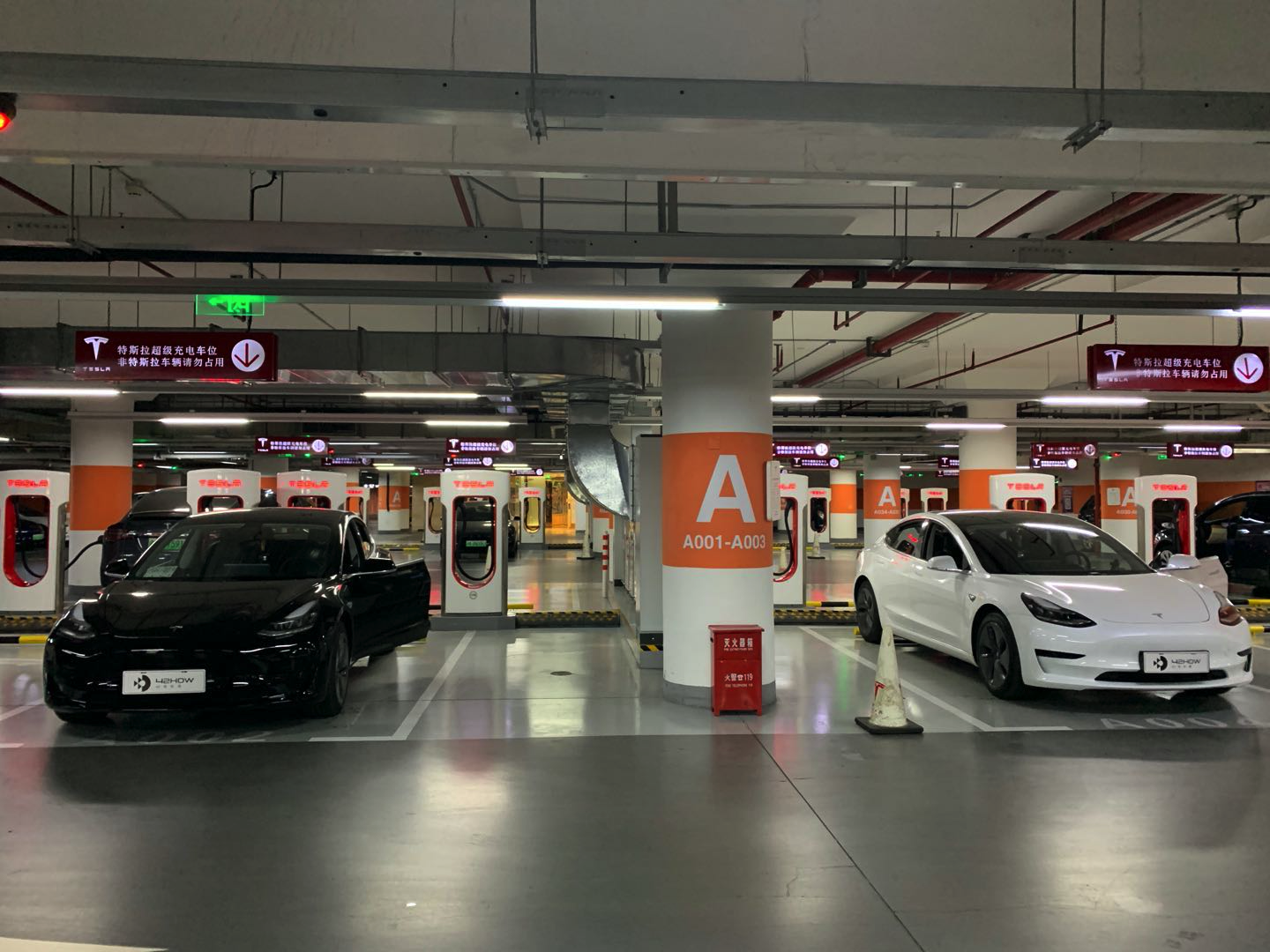
Let’s briefly introduce the two vehicles participating in the test:
White Model 3
- Battery Version: LG Chemical Ternary Lithium Battery
- Battery Capacity: 52 kWh
- Mileage: 7,674 km
- Delivery Time: End of May 2020
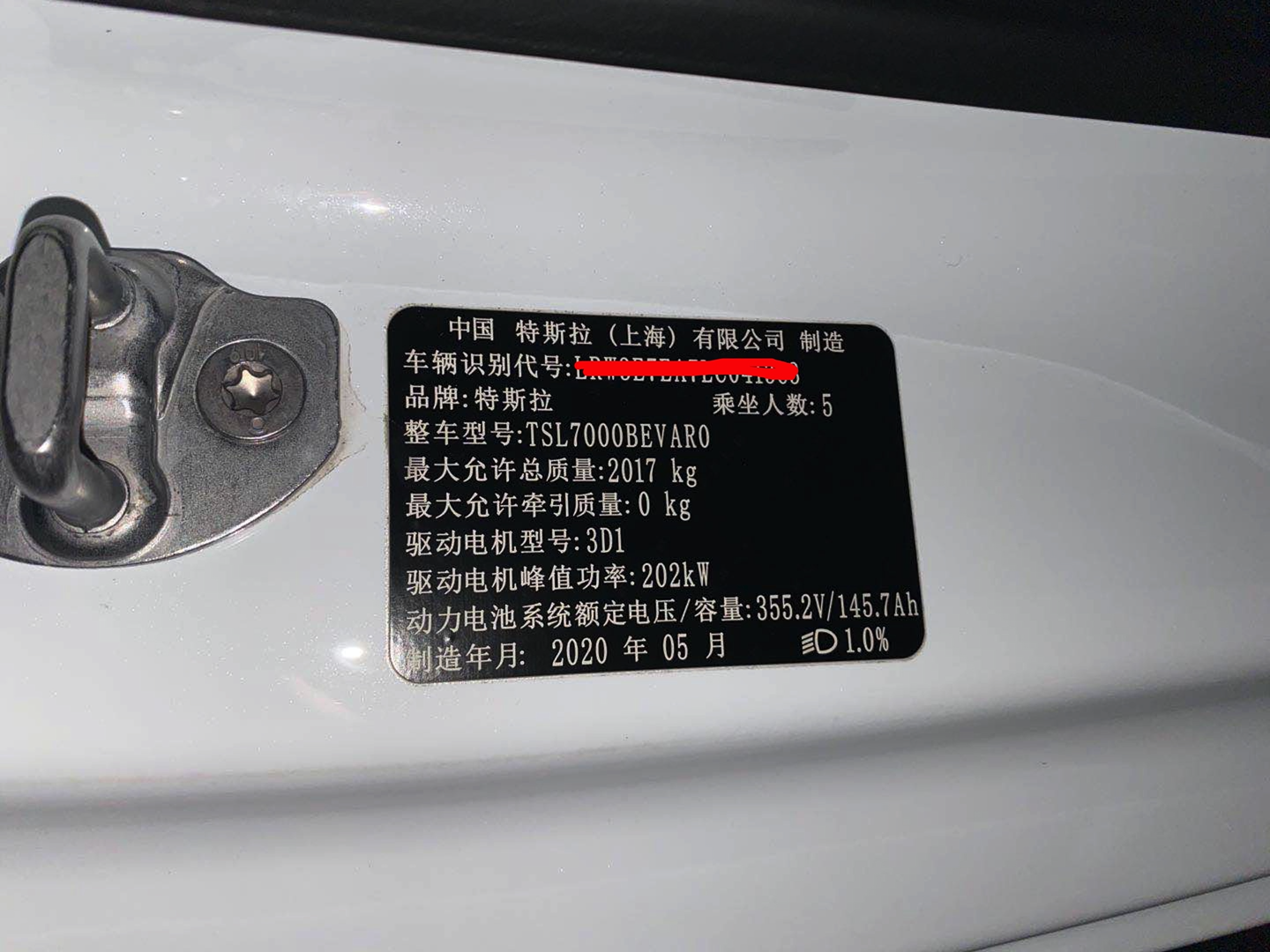
Black Model 3
- Battery Version: CATL Lithium Iron Phosphate Battery
- Battery Capacity: 55 kWh
- Mileage: 580 km
- Delivery Time: Mid-October 2020
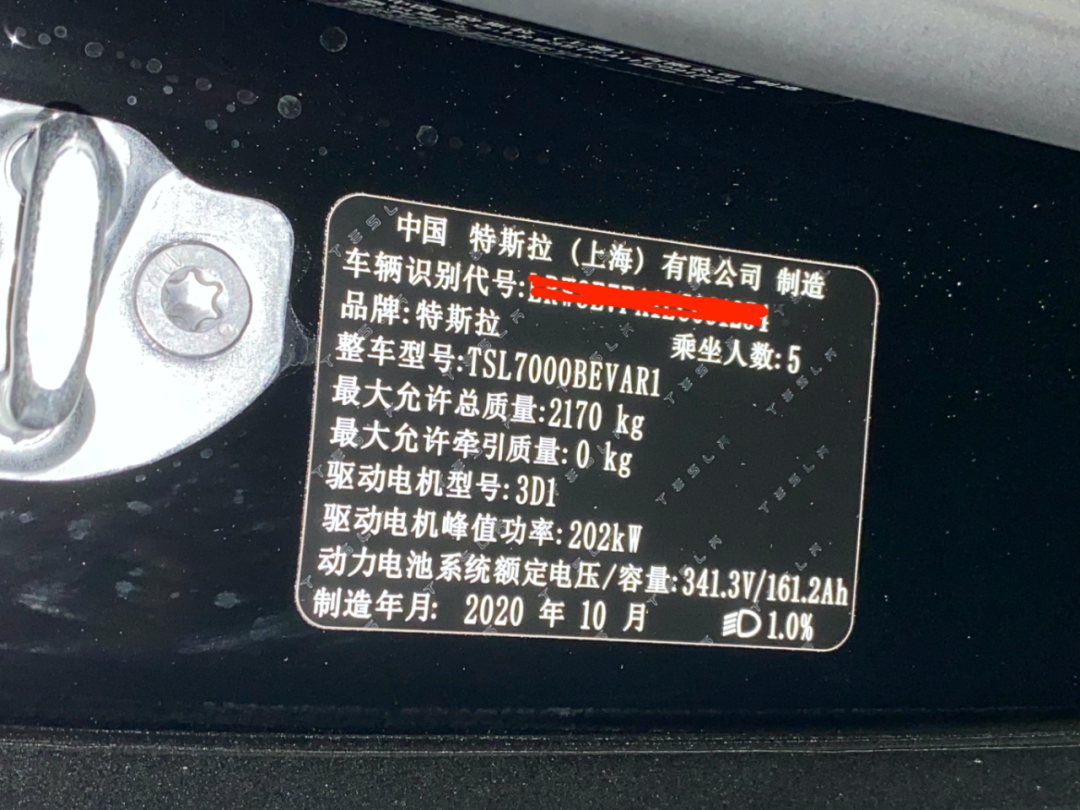
In order to ensure that we are not diverted during the test, we came to the “Shanghai Lilac International Commercial Center”, which has the largest number of supercharging facilities in Shanghai. The supercharging pile used for this test is the Tesla V2 Supercharger, and the environmental temperature during the test is 25 ℃.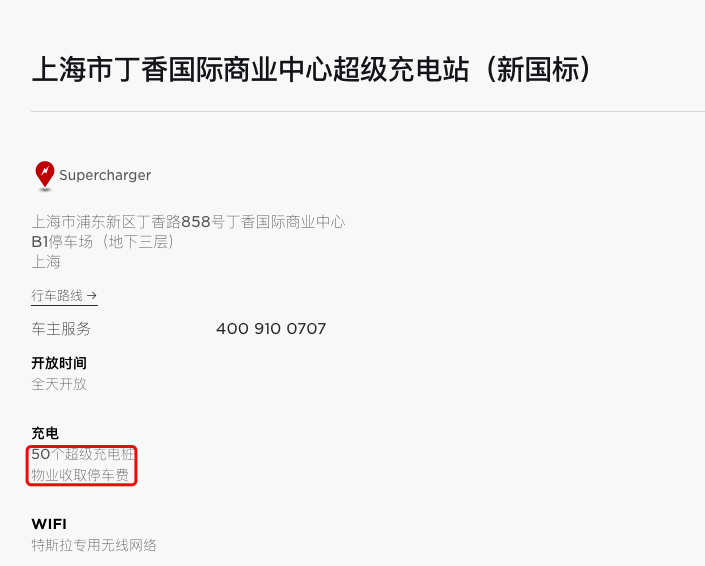
In addition, to ensure that the vehicles can be charged in the best condition during the test, we have taken the following three steps:
- Before testing, both vehicles used the vehicle navigation to the Shanghai Clove International Supercharging Station to ensure that the batteries are at the optimal charging temperature;
- In order to avoid the phenomenon of diversion in the same group of supercharging piles, we placed the two vehicles in two groups of charging piles for testing, and there was no third-party vehicle to affect the test during the testing process;
- During the test, both vehicles turned off the air conditioning to avoid affecting the charging power.
Now, let’s take a look at our test results:
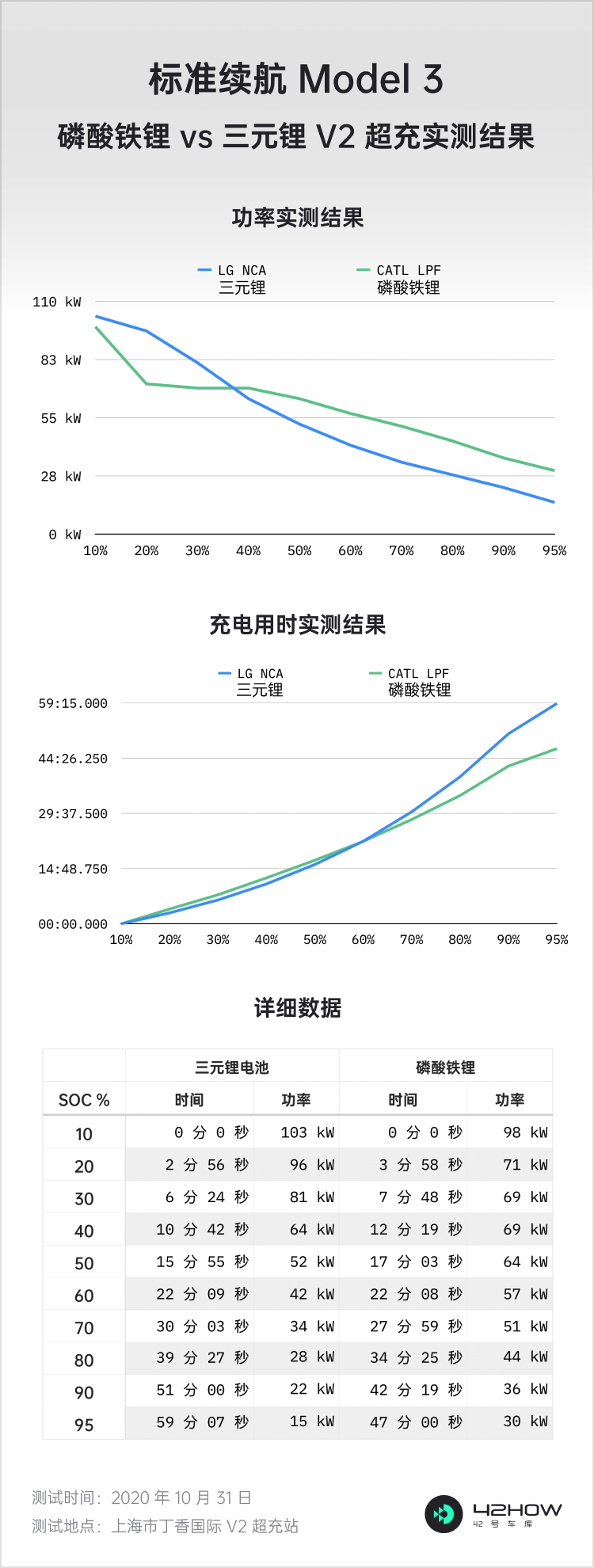
From the charging results of this test, it can be seen that the charging speed of lithium iron phosphate batteries was not pulled apart too much from that of ternary lithium batteries as predicted by some online sources. In addition, it even achieved a comeback after reaching 30% of the battery capacity and it lasted until the end.
In terms of time, for the most commonly used 10%-90% battery capacity range, on the V2 version of supercharging, the Model 3 Standard Range Plus with CATL lithium iron phosphate battery took 42 minutes and 19 seconds, while the LG ternary lithium battery-powered model took 51 minutes, which was more than 8 minutes faster.
Therefore, from the charging experience of this test, there is not much difference in the charging experience between the two models of vehicles at the current season temperature.
However, it should be noted that it is already gradually entering the deep autumn, and the temperature is gradually decreasing. Due to the physical characteristics of lithium iron phosphate batteries, theoretically, their charging and discharging performance in low-temperature environments would be significantly reduced compared to ternary lithium batteries.
So, when the cold winter really comes, can lithium iron phosphate batteries still maintain their advantages after reaching 30% of the battery capacity? Please stay tuned for our next phase of testing.
This article is a translation by ChatGPT of a Chinese report from 42HOW. If you have any questions about it, please email bd@42how.com.
